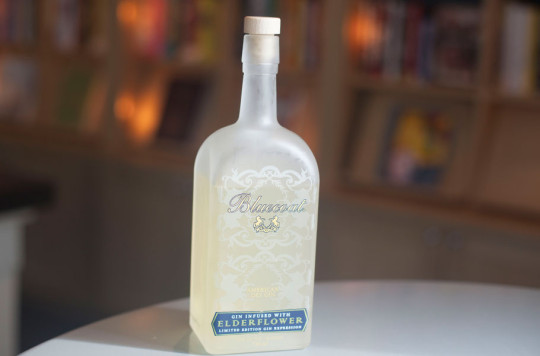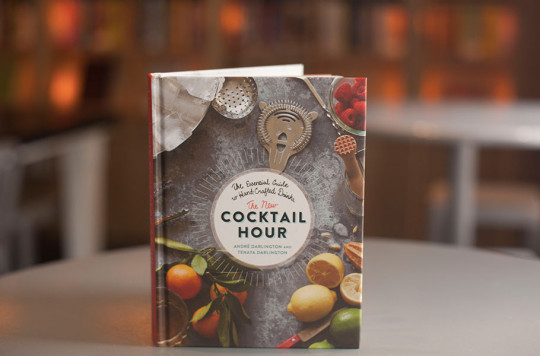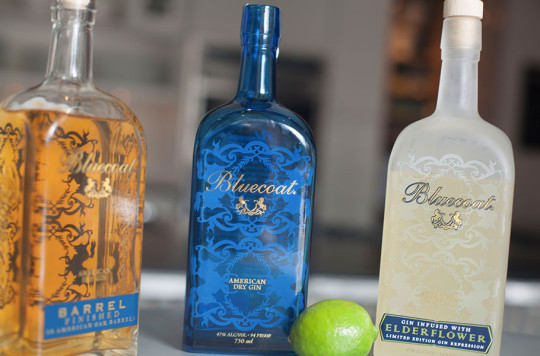A couple of weeks ago, we talked about the change in season and what that might mean for the foods you are cooking. Who doesn’t dream of a grill full of deliciousness when the weather changes? But what are you putting in your glass to go with your fare? Originally used as a way to make medicine palatable in colonial India and Africa, the Brits found tonic to be the perfect partner to gin. Thus creating the cocktail choice for many when the thermostat pushes past 80. Before we delve into composing this refreshing wonder, let’s review its primary components.
Gin
Gin is a distilled spirit that predominantly uses juniper berries for flavor. Much like its compatriot in boozy arms, gin was used medicinally to treat gout and kidney ailments. Like many successful alcohol stories, jenever (gin’s Dutch predecessor) made its way across the channel to 18th century England with soldiers. The growth in popularity of this herbaceous concoction coincided with some political posturing by William III and a surplus of unwanted beer grains. No longer using a previously malted beverage, what we know as English dry gin started to take shape. Today, gin comes in many forms and expressions as distilleries play with combinations of juniper berries, herbs, and spices.
In PA, we are lucky to have a great distillery in Philadelphia Distilling Company in our backyard. They are producers of the venerable Bluecoat American Dry Gin and its two younger expressions: Barrel Finished and Elderflower.
The original has a soft, sweet nose that is confirmed by a smooth body that is accentuated by bright lemon characteristics.
 The Barrel Finished version gives off some subtle woodsy aromas in addition to the sweetness of the original. While the first iteration is very lively, this one is a soothing, deep hug for the palate, replacing the zesty citrus for a rounder orange profile that is brought out by the American oak.
The Barrel Finished version gives off some subtle woodsy aromas in addition to the sweetness of the original. While the first iteration is very lively, this one is a soothing, deep hug for the palate, replacing the zesty citrus for a rounder orange profile that is brought out by the American oak.
 The newly released Elderflower harkens back to the distillery’s flagship but with decidedly more floral fragrance. Take a sip and your tastebuds will definitely wake up.
The newly released Elderflower harkens back to the distillery’s flagship but with decidedly more floral fragrance. Take a sip and your tastebuds will definitely wake up.
Tonic
As mentioned, tonic water also has its history in the medical field. Quinine from cinchona bark, the main flavoring component, was used in the tropical areas of the British empire to combat malaria. In its natural state, this highly bitter substance was hard to ingest on its own. Necessity being the mother invention and all, someone decided to mix their medicine with some sugar and soda. Boom! Tonic water was born.
Similar to gin, tonic has seen its profile grow through the years. Now that we see so many more craft gins on the American market, tonics have seen a bit of a revolution as well. We definitely encourage you to explore the many options available to you. You can even create your own with a simple recipe from The New Cocktail Hour by Philly’s own Andre and Tenaya Darlington; pick up your copy at COOK!
 Yields 2 cups
Yields 2 cups
1 whole lemon peel
1 whole lemon peel
1 whole orange peel
2 teaspoon cinchona
1/2 teaspoon allspice berries
1 teaspoon gentian root
2 teaspoon citric acid
1/2 cup lemongrass, roughly chopped
1/8 teaspoon salt
1 1/2 cup sugar
Combine ingredients, except sugar, in a saucepan with 2 cups of water and heat over medium-high heat just until boiling. Turn down the heat to low, cover, and simmer for 15 minutes. Strain liquid using a coffee filter. Put the liquid back on medium heat and stir in the sugar until dissolved. Cool. Transfer to a bottle and refrigerate. This will keep for at least 2 weeks. To make tonic water: Combine 3/4 ounce of your tonic syrup with 4 ounces of soda water or mineral water. Don’t be afraid to take this recipe and do different things with it. Much like food recipes, this can just be a guideline.
 For our exercise, we are going to use Fever-Tree’s Refreshingly Light and Canada Dry. Fever-Tree prides itself on the quality of their ingredients, using quinine extracted in the Congo and Mexican bitter oranges. The refreshingly light tonic sports 5.8g of natural sugar in its 6.8oz bottle. It can be a tough find though. Canada Dry’s offering is readily available on the market. Carrying 29g of sugar, you are starting with a slightly sweeter mixer than our other choice.
For our exercise, we are going to use Fever-Tree’s Refreshingly Light and Canada Dry. Fever-Tree prides itself on the quality of their ingredients, using quinine extracted in the Congo and Mexican bitter oranges. The refreshingly light tonic sports 5.8g of natural sugar in its 6.8oz bottle. It can be a tough find though. Canada Dry’s offering is readily available on the market. Carrying 29g of sugar, you are starting with a slightly sweeter mixer than our other choice.
The Cocktail
Your basic gin and tonic recipe is 2 parts of gin and 3 parts of tonic over ice. Stir to make sure both ingredients are evenly distributed. Garnish with lime and sip away.
While refreshing, let’s go ahead and spruce up a classic for fun. First, just switching up the tonic can make a world of difference. Tasting each gin with the Canada Dry versus the Fever-Tree presented very different results. The less sweet mixer allowed for more of the gin to shine through. Go with Fever-Tree and Barrel Finish, more of the smoke is front and center. The Canada Dry brings more of the caramel out. This also offered an opportunity for the garnish to come in more as well.
Speaking of garnish, it’s another way to elevate your G&T. At the tasting room in Fishtown, they use orange. This proved to be a fun experiment as the orange operated as a sweetener as opposed to the souring agent that lime is. Other garnishes that joined in on the party were cucumber and rosemary. While not a good companion to the barrel finished gin, the cucumber played well with both of the other versions and the rosemary was more of a fan of the unadulterated Bluecoat.
Lastly, bitters are an interesting option for introducing different flavors. Angostura serves each well, particularly with the lower sugar tonic. Getting away from the basics, utilizing Peychaud’s and Fee Brothers’ Cherry could yield surprising outcomes.
Of the combinations attempted, here are ones we’d suggest giving a go:
- Bluecoat Barrel Finished & Canada Dry (or any sweeter tonic) and Orange garnish

- Bluecoat, Fever-Tree, Muddled Cucumber and Rosemary
- Bluecoat Elderflower Expression, Fever-Tree, 3 splashes Fee Brothers Cherry Bitters and Orange Garnish
- Bluecoat, Fever-Tree, 3 splashes Angostura Bitters and Lemon Peel
What gin and tonic variations are you going to come up with?
Back to Blog



